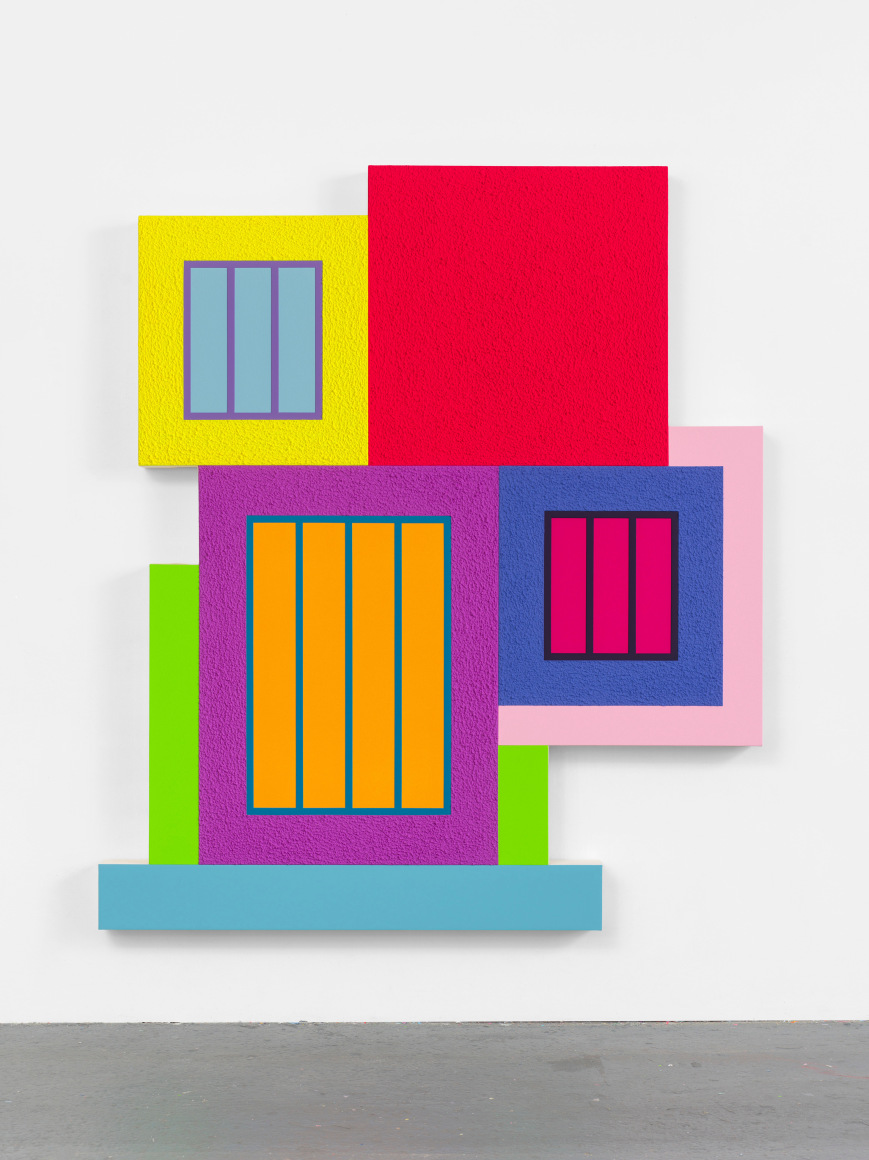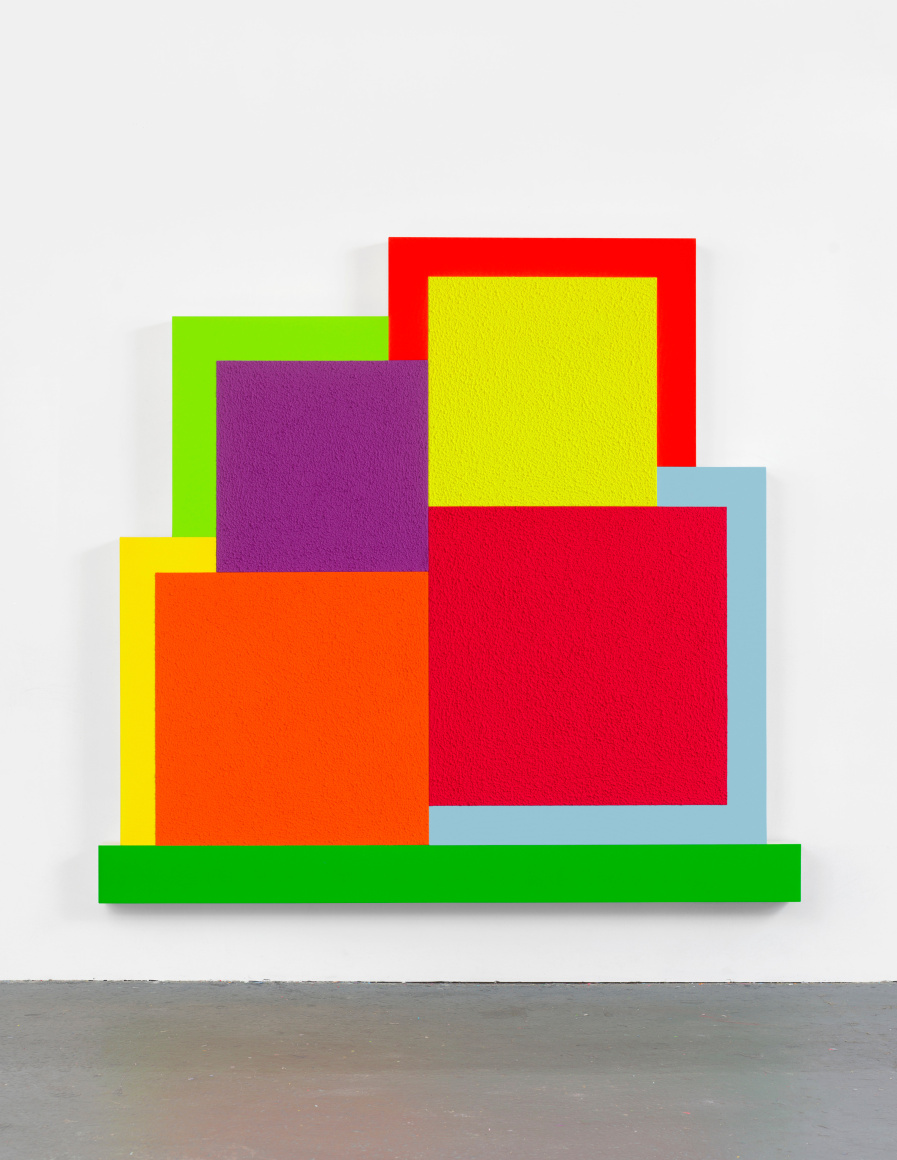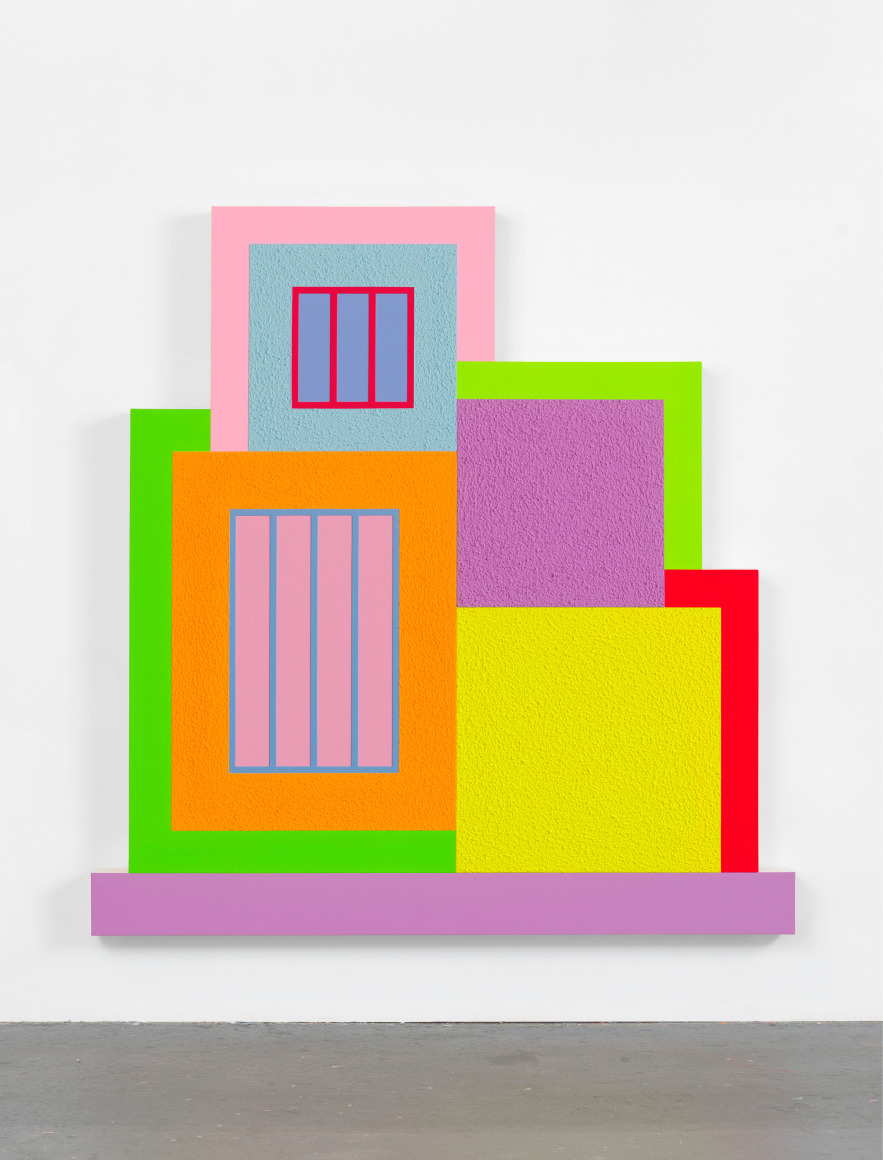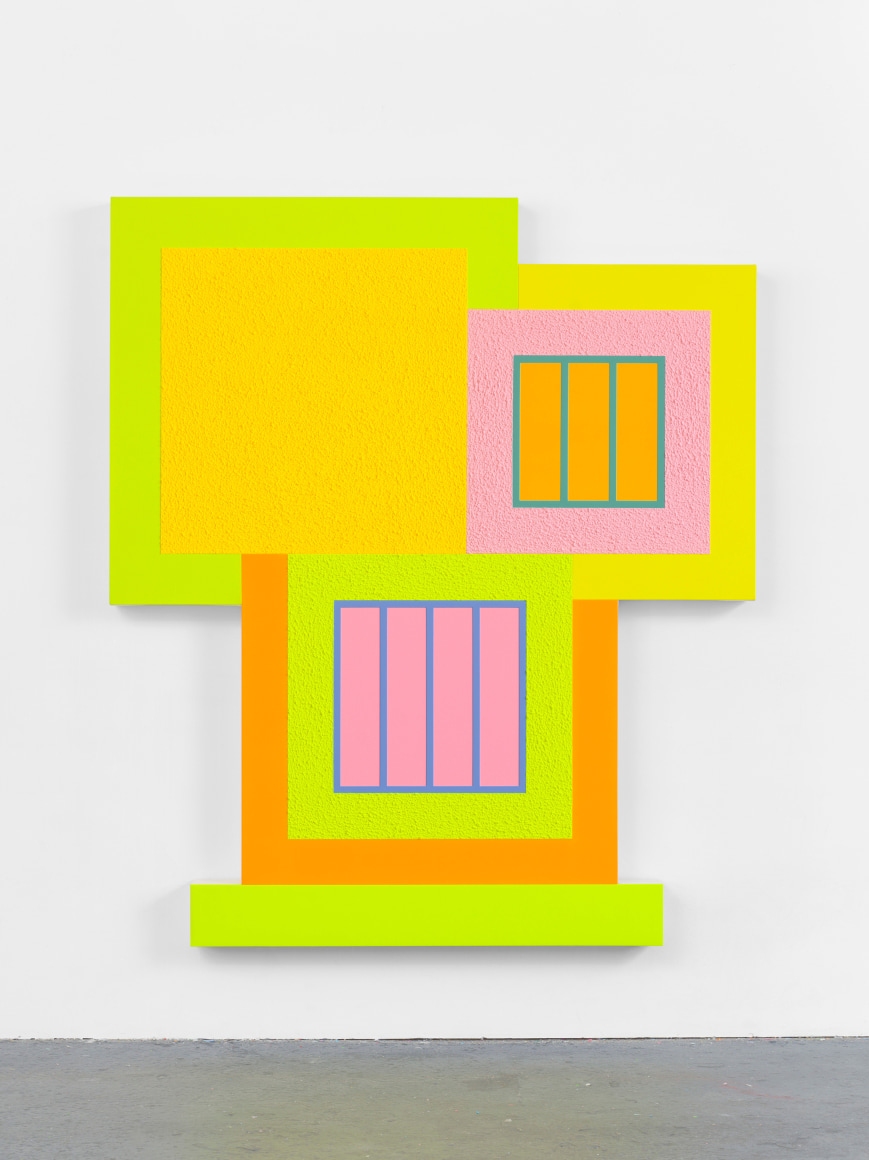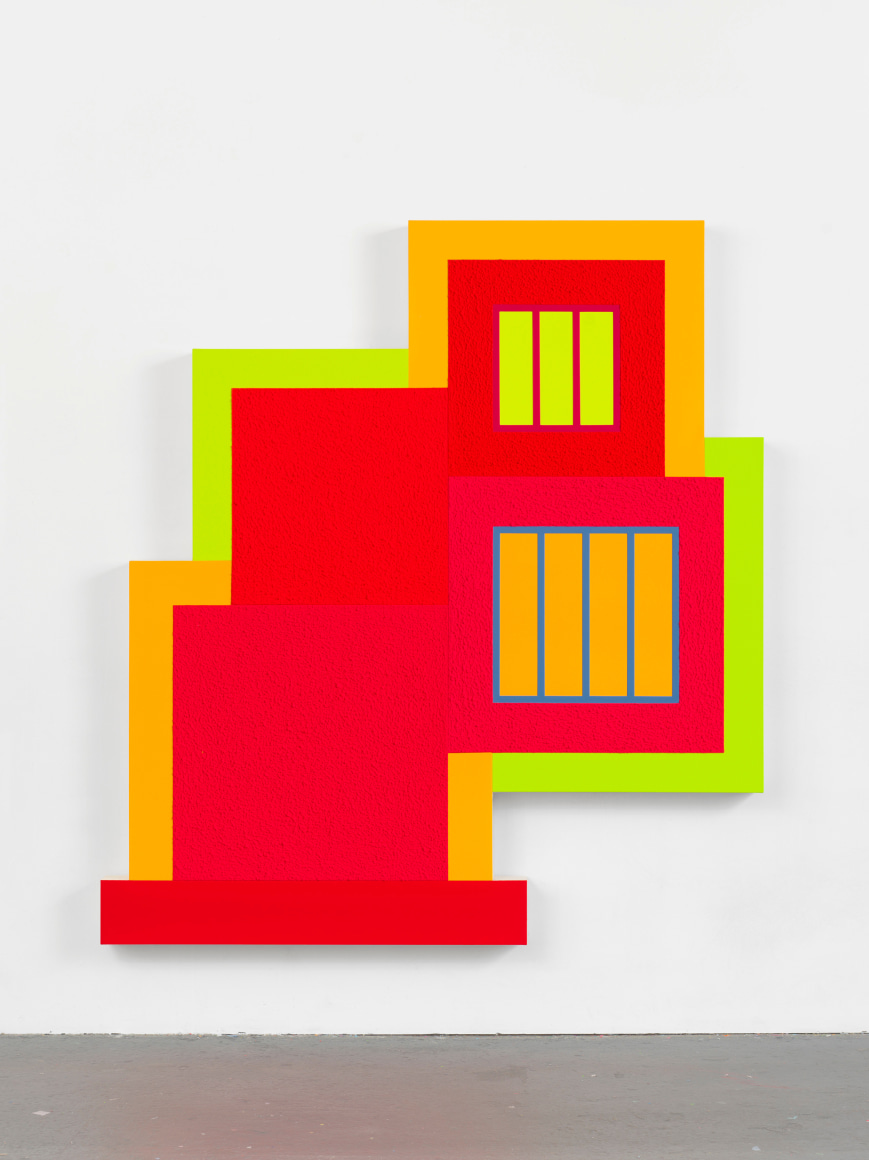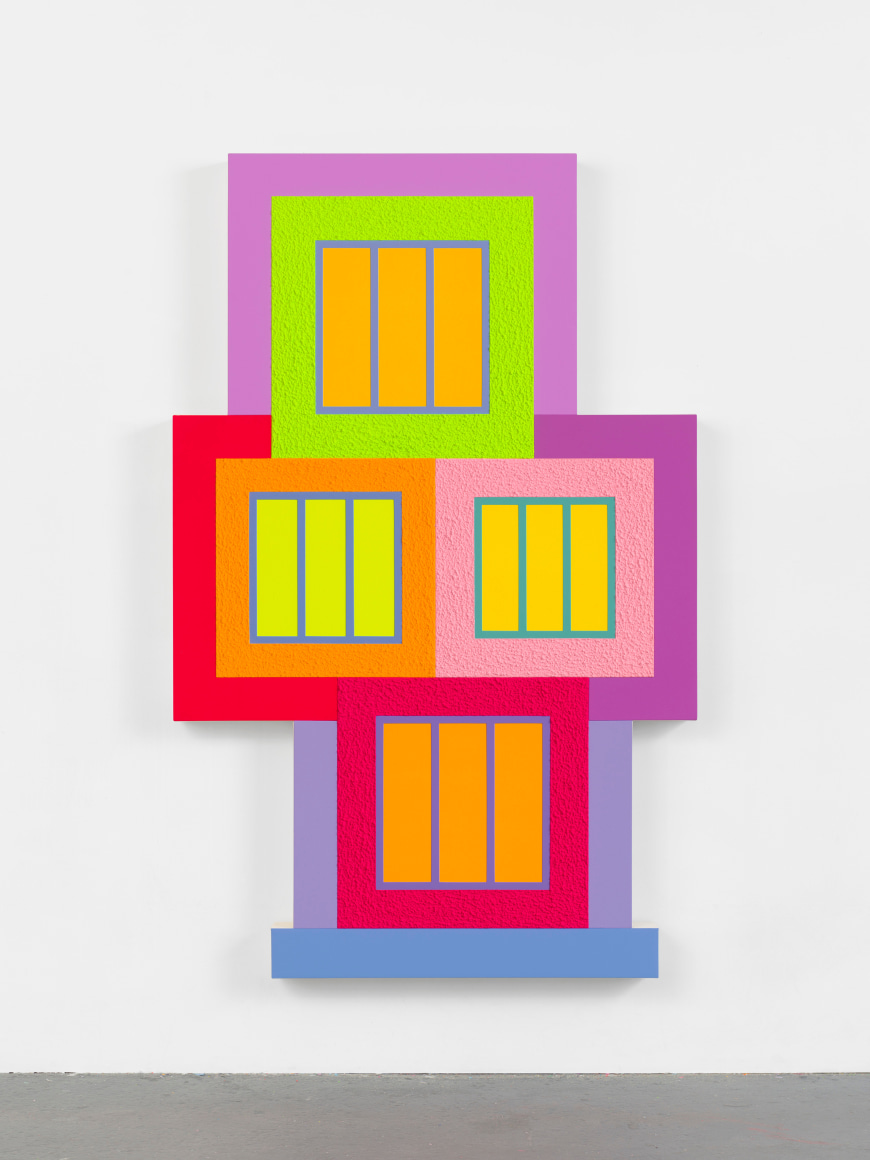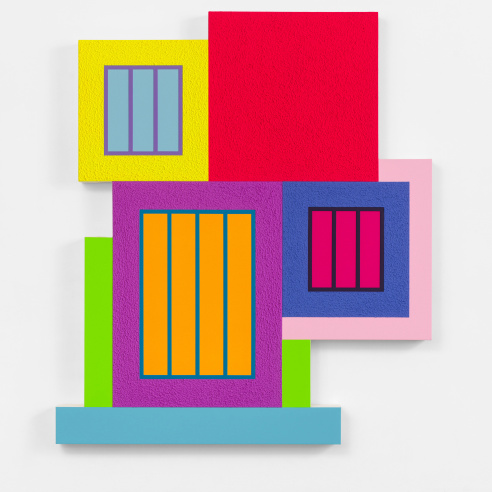
A prominent figure of the Neo-Conceptualist movement of the 1980s, Peter Halley uses geometric abstraction to explore the social, technological, and spatial linkages of the modern world.
Halley's abstract diagrams evoke the alienation of prison cells, city living, and technology. Halley consistently works with Roll-a-Tex—an industrial, textured paint used for decoration—and applies his fluorescent hues with a roller instead of a paintbrush; there’s no sign of the artist’s hand in his finished works. Grounded in the theories of Foucault and Baudrillard, Halley's work parodies the hermetic spaces of modern existence, while embracing commercially manufactured materials and hyperreal color schemes. Playful and immersive, Halley’s day-glo colors distinguish him as an experimental and masterful chromatist, while his pictorial system which anticipated the burgeoning networks of contemporary life solidified the significance of the social commentary of his work. Inspired by the legacies of Andy Warhol, Piet Mondrian, Philip Guston, Donald Judd, Agnes Martin, and even Picasso, Halley draws from a wide range of cultural sources.
In addition to his artwork, Halley’s critical writings, which bridged French post-structuralist theories with the digital revolution and the visual arts, became seminal contributions to the art world. Halley founded Index Magazine, which operated from 1996 to 2005 and served as the Director of Graduate Studies in Painting at the Yale University School from 2002 to 2011. Halley received his MFA in painting from the University of New Orleans, and his BA in Art History from Yale University. Halley’s work has been exhibited internationally at museums and institutions, including a retrospective at the Museo Thyssen-Bornemisza, the Whitney Museum of American Art, New York; the Museum of Modern Art, New York; Museo Nacional Centro de Arte Reina Sofía, Madrid; Dallas Museum of Art, Dallas; Museum of Contemporary Art, Tokyo; Broad Art Foundation, Los Angeles; and Buffalo AKG Art Museum, Buffalo, New York among others.

